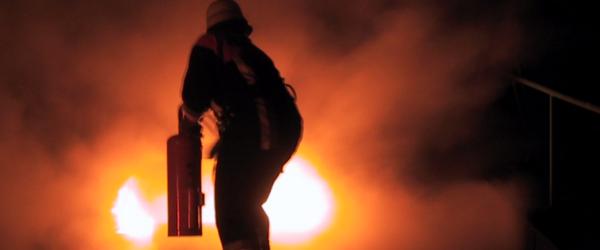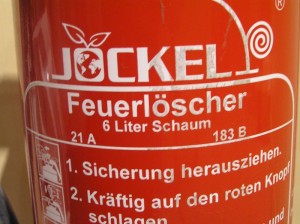Everything is Standardized, Even Fires
Nowadays, almost everything is standardized, even the tiniest little fire. There is also the so-called “standardized fire.” But even if the word sounds a little dry and dull, it does happen to be an important way to compare fire extinguishers with each other.
Honestly, up until a few months ago, I had no clue about this, either. But last summer, in a very media-savvy manner, this new extinguishing spray was praised on Stern TV. It is apparently so great that the police just banished its fire extinguishers from its vehicles and now traipses around the countryside with only those spray cans.
Despite the fact that even the German Firefighters Association thinks this thing is so great, there are a couple of skeptics, like me, who aren’t particularly impressed with the extinguishing capacity. But now not only seasoned firefighters but also other users find it hard to figure out what this thing is actually capable of. And this is where the standardized fire comes into play. There is a standardized fire for comparing fire extinguishers. This is defined in the DIN EN 3-1 and consists of a pile of pinewood beams. This pile is approximately 56 cm high and 50 cm deep. The interesting thing is the width of this standardized fire as this value is indicated on the extinguisher. For example, the value 21 A (see picture) printed on the foam extinguisher means that I can extinguish, with this device, the standardized fire described above with a width of 210 cm.
The second indicated value refers to a liquid fire, hence the label “B” for the flammability classification. The value indicates in liters how much of a burning liquid mixed with water can be extinguished. For the example in the picture that would be 183 liters. If you’d like to know all this in detail, you can read about it here.
Extinguishing capability with solid fuel in comparison
So, originally I arrived at this topic because of the extinguishing spray can. It’s interesting here to know what these little things are capable of. The universal extinguishing spray can get up to 3A and 13B. This means it can put out a wood pile with a 30-cm width and a liquid flammable mixture of 130 liters. A 6-liter foam extinguisher, for example, can get up to 34 A and 183 B. We firefighters oftentimes play around with a P12 at the scene of a fire, and even that one gets up to 55 A and 233 B. So this means I could extinguish a wood pile with a 5.5-meter width with that thing.
Here’s a graph of the three values as a demonstration:

So this was a little excursion into the world of fire extinguishers, but I don’t think it’s such a bad idea for firefighters to roughly know what fire extinguishers are capable of putting out.
What about you guys? Have you known the term “standardized fire” for a while or have you never heard of it before, either?
Oh, and here’s the video of the miracle extinguishing can with the policeman who banishes the fire extinguisher from the police cars:


